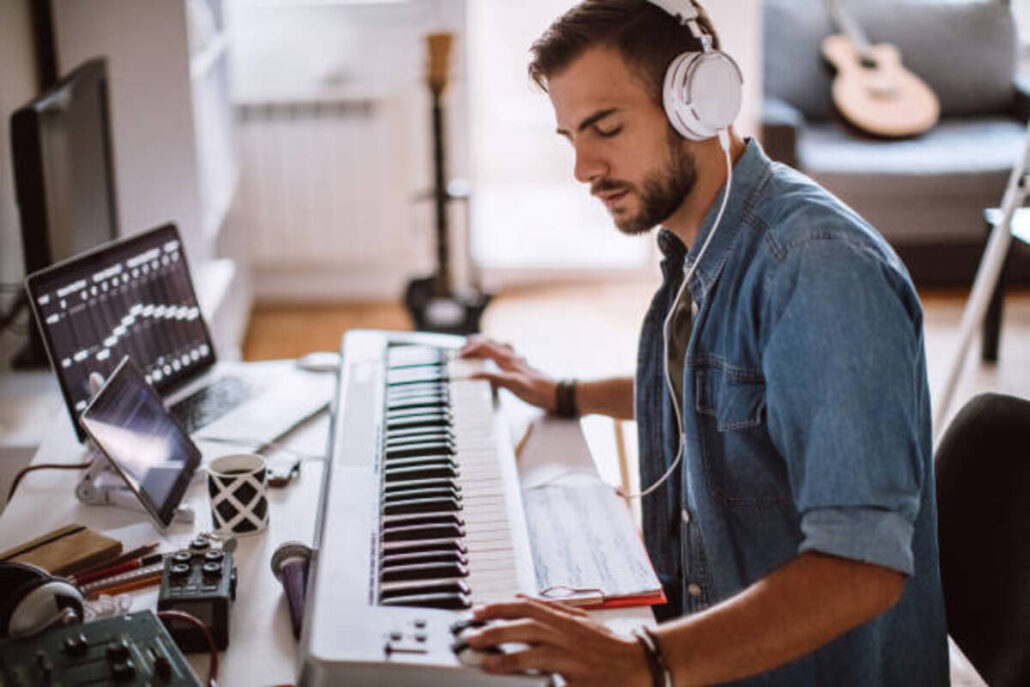Whether you’re into beat-making, multi-track recording, EDM production or critical audio editing, you’ll need the right music production software to optimize your workflow and push your creative endeavors. Some types of music production software are straightforward and best suited for simple creative works from beginners, while others favor professionals with advanced editing skills.
This article looks at the five best music production software you can use to further your creative career based on overall flexibility, usability and sound libraries.
1. Image-Line FL Studio
Originally launched as FruityLoops, FL Studio’s EDM-centric production tools and beat-focused workflow is the best music production software responsible for creating slick beats. Its production tools are some of the best for beginners to learn and master, which makes it an excellent choice for rising music producers.
Pros
– Affordable music production software
– Robust EDM-focused automation tools
– Great piano roll and step sequencer
– Free lifetime updates
Cons
– No advanced audio edition tools
– Hard to keep complex sessions organized
Image Line stands above the rest with an incredibly user-friendly step-based interface with automation tools that make it great music production software for budding artists. While its multi-track audio recording capability isn’t as great as some competitors, its simple grid-based workflow features incredible step sequencer systems and piano roll in any DAW.
While FL Studio’s visual simplicity is among the main reasons why most budding producers find it useful, it’s different from pro-DAW software. It doesn’t allow you to transfer most of the knowledge and workflow. Additionally, it lacks comping and key audio editing features that are essential, making it poor for creating non-electric music styles.
2. Apple GarageBand
Apple’s GarageBand is the best free music production software for novices and professionals who value mac devices. This app features excellent producer packs that make it the best way to learn guitar or piano on a computer.
Pros
– Excellent new producer packs
– Streamlined, professional interface
– Enjoyable instrument lessons
– Supports third-party plugins and 24-bit recording
Cons
– No mixing console view
– 44.1kHZ fixed sample rate
– Limited flexibility
There’s a solid chance you’ve heard about Apple’s GarageBand if you’re interested in music production. This free-to-use digital workstation for macOS stands above the crowd with an intuitive design paired with a vast library of high-res sounds that include synths, drum samples and guitar amp emulations.
While this free-to-use software lacks the useful tools available in pro-DAWs, such as a mixing console view and individual channel inspectors, its clean user interface makes it easy to produce music. Garageband also includes basic information features to adjust the volume, panning and other parameters automatically.
Although GarageBand is great for musical sketching and fast songwriting, its design is relatively limited, requiring users to work within its beginner-friendly parameters. Additionally, it doesn’t support audio recording sample rates above 44.1 kHz, preventing you from creating high-resolution projects.
3. Ableton Live 11
Ableton Live 11 is the best music production software for hip-hop artists. Its extensive array of effects and instruments, combined with its intuitive sound manipulation tools, makes it the ideal digital sound workstation for creating experimental audio and electronic music content.
Pros
– Extensive library of effects and synth sounds
– Intuitive workflow ideal for tweaking experimental sounds and electronic music
– Effective traditional production features such as take comping
Cons
– The user interface looks drab and utilitarian
– No free upgrades for new developments
Ableton Live has always stood above the other DAWs on the market by offering the best music production tools for beat-making and hip-hop. The software features a robust creativity-centric workflow, live performance integration and extensive sound manipulation capabilities. Additionally, Ableton Live has a comprehensive library with 1500+ sounds and plenty of resampling and sample-chopping tools, making it great for creating unique experimental projects.
Ableton’s intuitive session overview is perfectly developed for stacking and looping phrases when creating songs or beats. You can pair it with a MIDI controller to harness its live set capabilities for live performances. However, Ableton’s interface still looks predominantly gray and block, giving it a slightly drab and outdated appearance compared to other DAWs.

4. Avid Pro Tools
If Ableton Live 11 is the industry standard for EDM, DJs and hip-hop beats, then Avid Pro Tools is the standard for dedicated studio features, thanks to its nearly limitless capabilities and advanced design. The software works with Mac and Windows operating systems, with a powerful suite of sound recording and editing features.
Pros
– Works on Windows and Mac systems
– Innovative sound recording and editing tools
– Ideal for moving your projects from studio-to-studio
Cons
– Pricey subscription-based software
– Dense user-interface
With a suite of powerful audio recording and editing tools, Avid Pro Tools stands above its competition thanks to its flexible and fast workflow, making it excellent for developing commercial projects. Since it’s used in commercial audio studios worldwide, Avoid Pro Tools is ideal for maximizing compatibility when transferring your files between Mac and Windows systems or different studios.
Unlike the intuitive drag-and-drop interface that Apple’s GarageBand offers, Avid Pro Tools uses a menu- and keyboard-heavy workflow with granular control. However, these controls might be time-consuming and challenging for beginners to master. You’ll need to commit heavily to Avid’s ecosystem when using the software, as it only accepts plugins using the proprietary AAX format.
5. iZotope Spire
Smartphones are essential in our lives, influencing how we communicate, play games and record audio/ video content. Unfortunately, there aren’t many audio production apps for smartphones, and most of them are derivative, light versions of the desktop version. However, iZotope Spire stands above the rest.
Pros
– Portable audio recording
– Mix and post your audio to Soundcloud or send it as emails or text
– The app is easy to use
Cons
– Pricey
– The app requires cellular data to use
iZotope Spire is a hardware-software audio recording package that pairs with your smartphone to create a mobile studio that easily fits in your backpack. The hardware comes with a dual Phantom-powered mic and inputs directly using external tracking tools or microphones. It also has an inbuilt condenser mic, but its intuitive Spire software makes it shine.
Once you pair the hardware with your smartphone, you can record tracks simultaneously using the Spire device. iZotope also gives you a cool graphical interface when mixing and mastering the audio on your phone.
